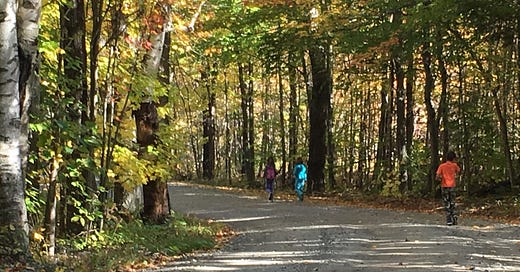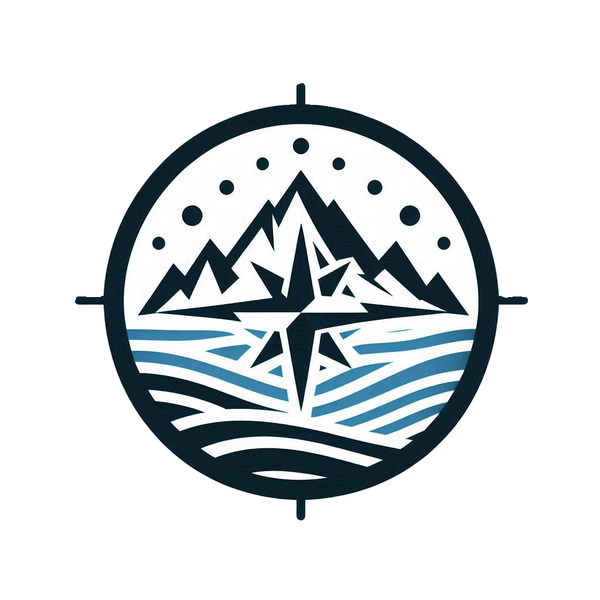This Week’s Takeaway: Our need to range is primal and raw, undeniable and innate. Yet, this desire faces resistance from the external structures of the relatively recent inventions of school and work.
Around second or third grade, American children begin to be re-programmed from a life of play and exploration to one that teaches them to sit still. Hard plastic chair, stuffy classroom, long division.
I enjoyed school before this moment. Why did gym and recess become my favorite parts of the day? Because play, movement, and tactile learning remain essential during these periods.
The modern classroom is the perfect training ground for contemporary knowledge workers. Children arrive at a climate-controlled building where they will spend the next seven hours inside. Teachers reward those who can sit still and focus, while those who can’t (or won’t) get punished.
This training represents the foundation of the modern knowledge-worker economy, the initial breaking-the-will of young play-hunters.
Those who succeed (i.e., good grades) get jobs that reward sitting still and focusing for a forty-hour work week. Those who struggle may continue to falter or eventually get a hands-on, active job that better suits them, though likely paid less than their white-collared counterparts.
We often make the mistake of thinking the way it is now is the way it’s always been.
The current blip of Western Civilization isn’t representative of humans just because it’s happening now. Our circulatory and endocrinal systems are closer to a dog’s than a cat’s, indicating we’ve evolved as hunters “by endurance and strategy rather than fleetness and surprise…Man is a distance runner as a consequence of hundreds of thousands of years of chasing antelopes, horses, elephants, wild cattle, and deer.” (p.114, Shepard).
We’re meant to range far distances but now rarely do so. While hunter-gatherer tribes typically occupied between 5,000 and 15,000 square miles, the modern American walks around 1.5 to 2 miles a day (around 3,000 steps), with only 25 percent of the population meeting the CDC’s physical activity guidelines.
Two weeks ago, I wrote about John Colter’s escape from the Blackfeet Indians. He spent eleven days covering 250 miles to reach the safety of Fort Lisa, a journey that he began both naked and injured. History and contemporary society contain examples of people like Colter who not only range regularly but who appear to live a different “normal” from the rest of us. Cultures like the Tarahumara Indians of Mexico are a good example of people who still travel long distances. Simultaneously, could the meteoric rise of ultrarunning in the mainstream be a message from our hunter-gatherer ancestors that it is time to return to our roots?
We must ask:
Is our current classroom–knowledge worker training model sustainable?
Is this rooted in who we are? Are we merely training ourselves to be unhappy slobs?
Have we built a training plan that does not, and never will, reflect who we are as a species? (the result of which is mental and physical dissonance)
Every January, we resolve to do better, only to put off until next year what can begin today.
Let us return to the second-grade classroom where the collective re-programming begins. As we transition from play-based experiences to the synthetic classroom, we ensure our physical and creative tendencies diminish to the point of habit, the end result being our desk-jocky knowledge worker (it’s telling that schools and minimum security prisons share an indistinguishable outside appearance).1
Play, however, is training for the hunt.
The capture of bugs, sneaking up on wildlife, and emulating adult hunters occur naturally among kids who experience meaningful exposure to the natural world. Paul Shepard explained, “play hunting has the same relationship to hunting that love for mother has to adult love: grounding in a fundamental context combining action and implicit thought.” (p.140, Shepard).
Action and thought, together, formed the basis of the hunting Shepard witnessed as a child of the Ozarks. He watched friends with less privilege and no guns hunt proficiently under the tutelage of elders who instilled that there is a premium value assigned to the non-human world. Forced into work at the factory or farm, he saw the “drudgery and toil had blunted them” in adulthood. This blunting rewarded only persistence, relegating other qualities developed in childhood through play-hunting and actual hunting (independence, confidence, generosity, health, environmental awareness) to oblivion since those qualities had little value in the modern work environment.
Their workplace prioritized commodification and efficiency, leaving little time for the engaged hunting lifestyle of their youth. Today’s companies operate no differently, perhaps the only change being more vocal, yet superficial, overtures promoting corporate rhetoric about “community” and “family.”
I’ve advocated that, as modern hunters, we must take action, and this is the key point I highlight here. Do you feel like you should be moving more? Do you feel icky at the end of a long day in Zoom meetings? Do you look out the window and ask, “What the hell am I doing, spending another day staring at this damn screen?” (I do)
Yet the classroom–knowledge worker flywheel continues to build momentum.
Perhaps you’ve wondered if forcing a child to sit in the classroom for seven hours when they are ten years old may not be the best way to develop the valuable combination of implicit thought and action.
Upon reflection, it is no surprise that this is an effective way to create another generation of parents who seem okay with sitting in long pick-up lines2 and chauffeuring their children to various club sports3, oblivious to their corresponding knock-on effects on family and community (I’ve been guilty of both).
You should not feel these questions, thoughts, and feelings unjustified. After all, time has designed the human mind and body to move, range, and be active.
Bringing the discussion back to the practical, we ask:
How can we be as active as we should be in a contemporary context? Perhaps the more poignant version of the question is:
How can we replicate the activity level of our ancestors to achieve maximum health?
Replicating the activity of our ancestors
Your activity depends on your goals, but recognizing and embracing the fact we’re meant to move more is important because it will lead to motivation and acceptance.
For me, building practical elements into my exercise has always been key. Seasonal-functional, dual-purpose exercise is my favorite. Getting firewood, hunting, hiking, and building & maintaining trails are some examples. When I’ve lived in cities, dual-purpose exercise like this took the form of biking to and from work and running to the supermarket (and rucking home).
I run, ski, bike, and do HIIT workouts, depending on the weather. There’s a lot of information out there on exercise training (and I’m not an expert). A couple of people I regularly look to for ideas are
and ; both integrate the physical (training) and the mental (resilience), which I find motivational.






Well said, Jesse. Last fall I worked with Registered Maine Guide, Arthur Haines on rewilding myself. I had approached him about a black bear hunt and ended up in an apprenticeship. I am old enough to have made it through college when papers still were typed. I played in the woods unsupervised starting in kindergarten. Working with Arthur helped me to see the downsides of modern life, even as a middle-aged man. Hunting the hard way, on foot, without cell cameras etc,...really helped me to "peel my onion." I can't imagine how difficult it will be for kids who haven't gotten dirty, chased frogs, jumped squirrels and eaten wild raspberries later in life. Arthur has a well-researched and detailed book on rewilding and neoaboriginal life ways. It has deep discussion on children and what we can do today to help them. It's called "A New Path." And yes, after some hard work and a lot of disappointing days, I did get a bear.
Wonderful essay on such a vital (literally) topic, Jesse! 👏
The rules of our industrial education model: Shut up, sit still, color within the lines. What could possible go wrong?!
My favorite solution to this problem is Geoff Mulgan's "studio school" paradigm based on ye olde workshop where apprentices learned by observing and DOING. He discusses this as a solution to the high UK drop-out rate in this presentation:
https://www.ted.com/talks/geoff_mulgan_a_short_intro_to_the_studio_school